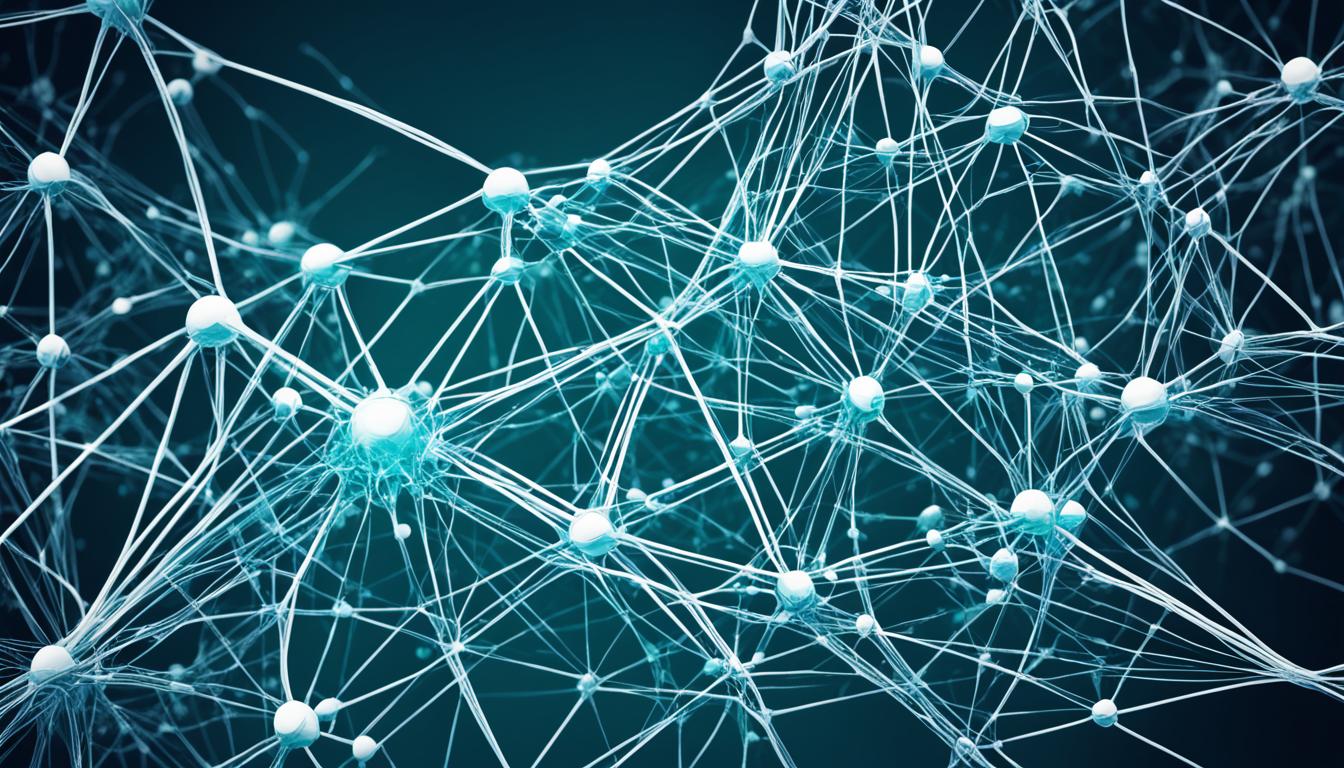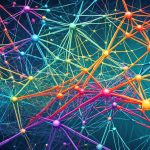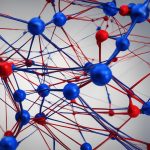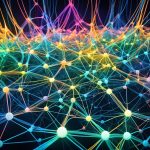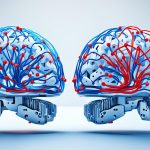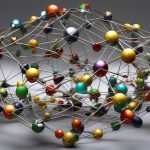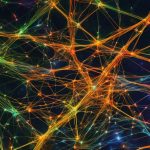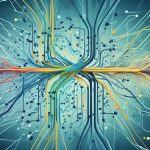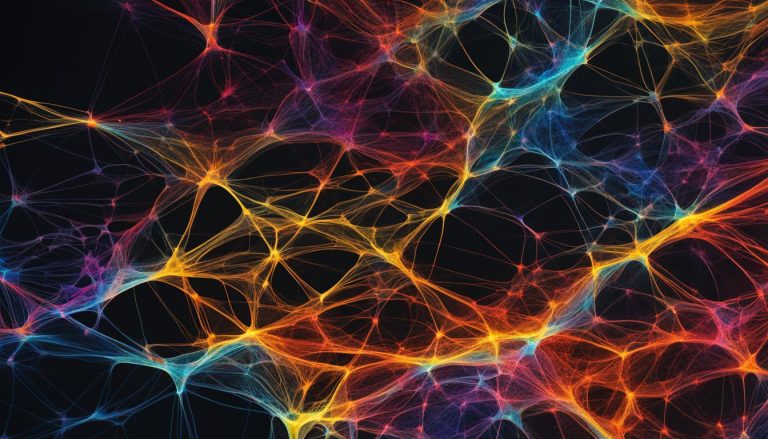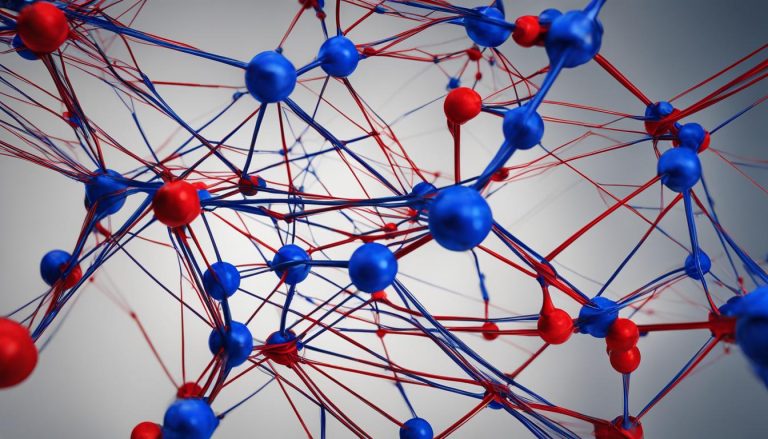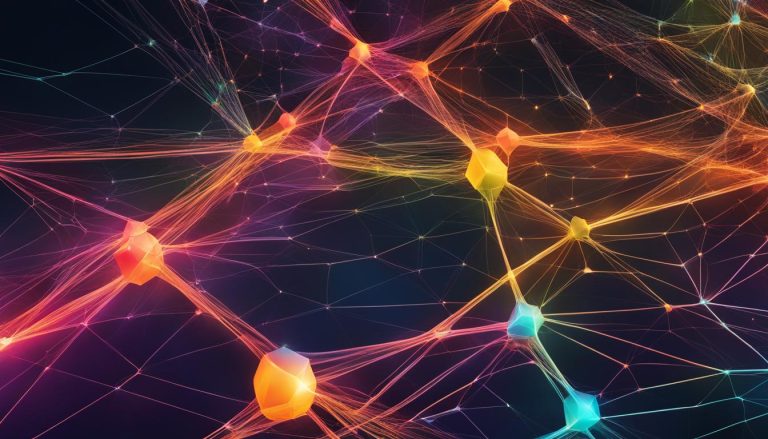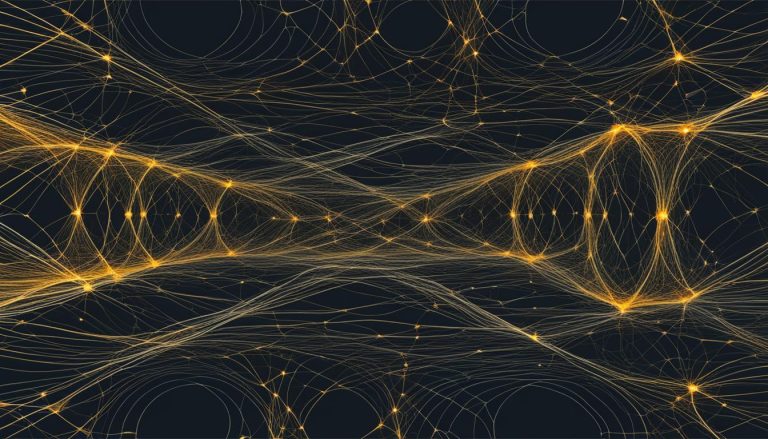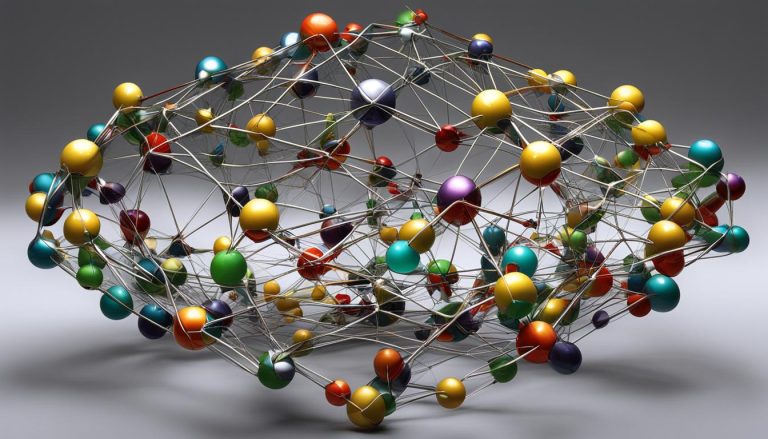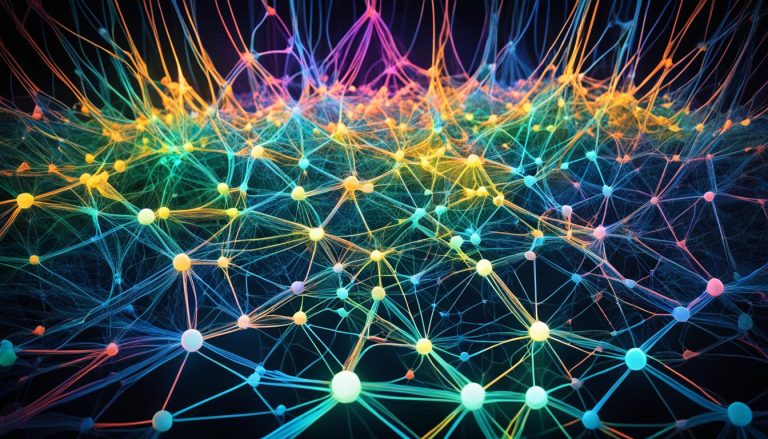Artificial Intelligence (AI) has been rapidly advancing, and one of the key factors driving its evolution is neuroevolution. Neuroevolution combines the power of neural networks with evolutionary algorithms, allowing AI to enhance its problem-solving skills, artistic talents, and gaming prowess. Through the process of neuroevolution, AI evolves and adapts, unlocking its creative abilities and pushing the boundaries of what it can achieve.
Understanding Neuroevolution
Neuroevolution harnesses the power of evolutionary algorithms to optimize neural network structures and weights. It is a fascinating technique that allows for the continuous improvement of AI systems. By evolving a population of neural networks over generations, neuroevolution enables the discovery of optimal network architectures and weight configurations.
The Key Components of Neuroevolution
Neuroevolution involves several important components that work synergistically to drive the evolution and improvement of neural networks:
- Population: A collection of neural networks represents the population in neuroevolution. Each network is unique, with its own set of weights and architecture.
- Fitness Function: The fitness function measures the performance of each neural network within the population. This evaluation guides the selection of networks for reproduction.
- Selection: Networks with high fitness scores are chosen as parents for the creation of offspring in the next generation.
- Crossover: Crossover involves combining the weights and structures of selected parent networks to create new networks with potentially enhanced capabilities.
- Mutation: Mutation introduces random changes to the weights and structures of networks, enabling exploration of new solutions and avoiding stagnation.
- Replacement: The new offspring networks replace older networks in the population, ensuring the constant evolution and improvement of neural network configurations.
- Termination: The neuroevolution process terminates when certain conditions are met, such as achieving a desired level of performance or reaching a maximum number of generations.
These components work in tandem to drive the optimization process, constantly refining the neural network structures and weights of AI systems.
| Component | Description |
|---|---|
| Population | A collection of unique neural networks |
| Fitness Function | Evaluates the performance of neural networks |
| Selection | Chooses high-performing networks for reproduction |
| Crossover | Combines weights and structures of parent networks |
| Mutation | Introduces random changes to network weights and structures |
| Replacement | Replaces older networks with new offspring networks |
| Termination | Process ends upon meeting specific conditions |
Through neuroevolution, AI systems can optimize their neural network structures and weight configurations, leading to improved performance and the ability to tackle complex tasks.
Neuroevolution vs. Traditional AI
When comparing neuroevolution to traditional AI, it becomes evident that these two approaches to artificial intelligence differ significantly in their underlying principles and methodologies.
Traditional AI heavily relies on gradient-based optimization techniques, such as backpropagation, to train neural networks. This process involves iteratively adjusting the network’s weights based on the calculated errors between the predicted and actual outputs. The goal is to minimize the error and improve the network’s performance.
On the other hand, neuroevolution takes a different path. Instead of relying on explicit targets or labeled data, it evolves neural network architectures and weights through a combination of evolutionary algorithms and genetic operators.
Neuroevolution allows for the exploration of novel network architectures, going beyond the prescribed layers and nodes typically found in traditional AI approaches. This flexibility in optimizing neural network structures enables potential breakthroughs in solving complex problems and uncovering more efficient network configurations.
Furthermore, neuroevolution is not limited to optimizing just the weights of a neural network. It can also optimize other parameters, such as the network’s structure itself, which can lead to the discovery of more efficient and effective models.
To illustrate the difference, let’s consider the example of training a neural network to play a game. In traditional AI, the network would rely on backpropagation and error minimization techniques to learn the optimal strategies based on labeled data. In contrast, neuroevolution would take an evolutionary approach, exploring various network architectures and selecting those that perform better in the game-playing task. This adaptability and capacity for innovation are what set neuroevolution apart from traditional AI.
Why is Neuroevolution Important?
Neuroevolution plays a crucial role in the field of artificial intelligence, offering immense importance in optimization and adaptation. Its flexible approach allows for the exploration of a wide range of neural network architectures and parameters, leading to the discovery of innovative solutions.
Unlike traditional gradient-based optimization methods, neuroevolution does not rely on explicit targets or labeled data. This makes it especially suitable for non-differentiable problems, where the gradient information is not available or reliable.
One of the key advantages of neuroevolution is its ability to adapt to different situations and tasks. By evolving neural networks and their architectures, AI systems can quickly respond and modify their behavior based on changing circumstances. This adaptability makes neuroevolution invaluable in various applications.
“Neuroevolution offers a powerful and flexible approach to optimization and adaptation in AI systems, allowing them to discover unique solutions and adapt to dynamic environments.” – Dr. Lisa Thompson, AI Researcher
The flexibility of neuroevolution enables AI to optimize not only the parameters and weights of neural networks but also their overall structure. This ability to explore novel network architectures and adapt them to specific tasks contributes to the creation of highly efficient and effective AI systems.
With neuroevolution, the focus is not solely on improving performance on specific benchmarks but on finding solutions that can generalize well to different scenarios. This makes it an ideal approach for solving complex real-world problems with diverse requirements and constraints.
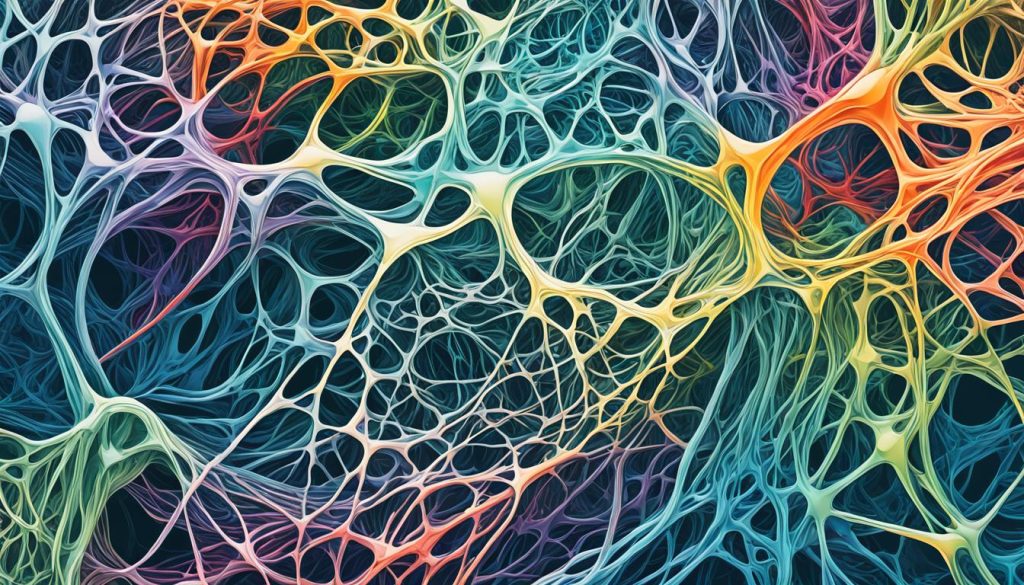
Adaptation and Optimization
Neuroevolution’s importance lies in its capability to adapt and optimize AI systems for a wide range of tasks and challenges. By exploring diverse network architectures and parameters, AI can achieve optimal performance in different domains, including gaming, robotics, and optimization.
In the field of reinforcement learning, neuroevolution enables AI agents to learn and improve their decision-making abilities through trial-and-error interactions with their environments. This adaptive process allows for the development of intelligent systems that can excel in complex, dynamic environments.
Moreover, neuroevolution can optimize neural networks for robotic control, enabling robots to learn and adapt their behaviors to intricate tasks and changing environments. This flexibility has significant implications for the advancement and integration of AI in various industries and sectors.
Overall, neuroevolution’s importance lies in its ability to optimize AI systems, adapt to different situations, and enable innovation in the field of machine learning. As researchers continue to explore and refine neuroevolution techniques, we can expect its significance to grow as a key driver of AI’s future.
Applications of Neuroevolution
Neuroevolution, with its remarkable ability to optimize neural networks, has found diverse applications in various fields, including reinforcement learning, robotics, game playing, and optimization. Through its adaptive and evolutionary mechanisms, it has revolutionized the way we approach complex problem-solving and decision-making tasks.
Reinforcement Learning
One of the key applications of neuroevolution is in training neural networks for reinforcement learning tasks. By iteratively adjusting the network’s structure and weights, neuroevolution enables the network to learn and adapt to maximize rewards in dynamic environments. This has significant implications in fields such as autonomous driving, robotics, and intelligent decision-making systems.
Robotics
Neuroevolution plays a crucial role in evolving control policies for robotic systems. By employing neuroevolution techniques, robotic systems can optimize their behavior and adapt to changing environments. This empowers robots to perform complex tasks and overcome challenges, making them more autonomous, versatile, and efficient.
Game Playing
Game playing is another area where neuroevolution has made substantial contributions. By employing neuroevolution techniques, AI agents can evolve game strategies and develop innovative approaches to win against human opponents or other AI systems. This has been particularly evident in the development of intelligent game-playing agents in fields like chess, Go, and poker.
Optimization
Neuroevolution’s optimization capabilities extend beyond reinforcement learning and robotics. It can also be applied to various optimization problems, where finding the best solution among a vast search space is crucial. Neuroevolution enables the discovery of optimal solutions by evolving neural networks that can efficiently explore and exploit the problem space.
NEAT: NeuroEvolution of Augmenting Topologies
One specific neuroevolution technique that deserves mention is NEAT (NeuroEvolution of Augmenting Topologies). NEAT combines the evolution of both the network weights and structures to overcome the limitations of fixed network architectures. By allowing networks to add, remove, and adapt neurons and connections, NEAT facilitates the discovery of novel and more effective network topologies for solving complex problems.
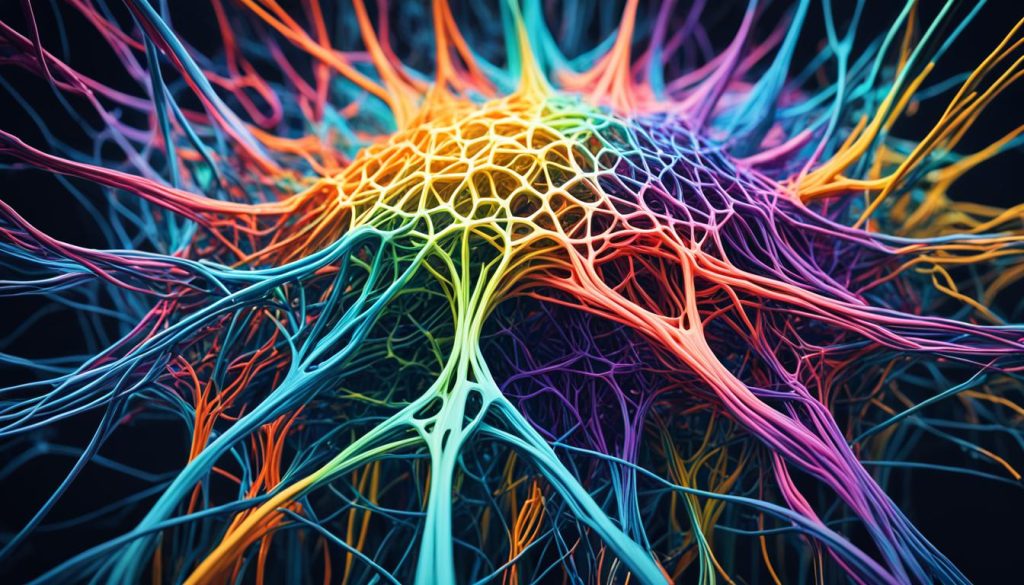
With its wide-ranging applications, neuroevolution showcases the significant impact it can have on various domains. Whether it is advancing reinforcement learning, empowering robotics, enhancing game playing, or optimizing solutions, neuroevolution continues to push the boundaries of what is possible in the field of artificial intelligence.
| Application | Key Benefits |
|---|---|
| Reinforcement Learning | Ability to learn and adapt in dynamic environments |
| Robotics | Development of adaptive and autonomous robotic systems |
| Game Playing | Evolution of innovative game strategies |
| Optimization | Efficient exploration of search spaces for optimal solutions |
| NEAT | Discovery of novel network topologies for improved performance |
NEAT: NeuroEvolution of Augmenting Topologies
NEAT, short for NeuroEvolution of Augmenting Topologies, is a neuroevolution technique that optimizes neural networks by evolving both the weights and the structure. It combines the power of genetic algorithms with neural networks to create efficient and effective network optimization.
NEAT starts with simple neural networks, allowing for gradual complexity enhancement through the addition and modification of network components. This unique approach enables the discovery of novel network architectures that can adapt and perform optimally in various tasks and scenarios.
Genetic algorithms play a vital role in NEAT. They emulate the process of natural evolution, where neural networks evolve over generations through the mechanisms of mutation and crossover. This process promotes the preservation of successful network structures and encourages the exploration of new and innovative architectures.
Advantages of NEAT in Neural Network Optimization
- NEAT offers a more efficient and effective approach to neural network optimization, leveraging both weight and structure evolution.
- By allowing for the exploration of novel network architectures, NEAT can discover innovative solutions and improve performance in various tasks.
- The gradual complexity enhancement in NEAT ensures the preservation of simpler network structures while enabling the discovery of more advanced configurations.
- NEAT’s genetic algorithms provide a robust mechanism for evolving neural networks, mimicking natural evolution processes.
With NEAT, researchers and practitioners can unlock the potential for neural networks to adapt and evolve, leading to enhanced problem-solving capabilities and improved performance in AI applications.
Figure: NEAT offers efficient neural network optimization by evolving both weights and structure.
Limitations, Challenges, and Future Directions
While neuroevolution shows great promise in shaping the future of machine learning and artificial intelligence, it is not without its limitations and challenges. Understanding and addressing these constraints will pave the way for further advancements in this field.
1. Computational Expense
One of the significant challenges of neuroevolution is its computational expense, especially when tackling complex tasks. Training neural networks through neuroevolution requires substantial computational resources and time. Researchers need to carefully balance resource allocation and efficiency to ensure optimal results.
2. Slow Convergence
Achieving convergence to high-performing solutions using neuroevolution can be a slow process. Fine-tuning the parameters and optimizing the fitness function can be a time-consuming endeavor. Researchers must carefully monitor and adjust the training process to accelerate convergence without sacrificing the quality of the evolved solutions.
3. Lack of Interpretability
Another challenge inherent to neuroevolution is the lack of interpretability in evolved neural networks. Understanding the decision-making processes and inner workings of such networks poses a challenge. This lack of interpretability can limit the application of neuroevolution to domains where transparency and explainability are crucial.
Future Directions
Despite these limitations and challenges, neuroevolution continues to hold promise for the future of machine learning and artificial intelligence. There are various avenues for further development and research:
- Development of efficient and scalable neuroevolution algorithms to reduce the computational expense and improve training times.
- Exploration of methods to enhance convergence speed without compromising solution quality.
- Investigating approaches to increase the interpretability of evolved neural networks, allowing for a deeper understanding of their decision-making processes.
- Integration of neuroevolution techniques with other machine learning paradigms to leverage their complementary strengths and address their individual limitations.
By addressing these challenges and exploring these future directions, researchers can unlock the full potential of neuroevolution and drive innovation in the field of artificial intelligence.
Conclusion
Neuroevolution, with its unique combination of neural networks and evolutionary algorithms, is revolutionizing the training of AI systems. This innovative approach offers adaptive network architectures and opens up possibilities in domains such as reinforcement learning, robotics, and optimization. As the field continues to evolve and computational resources expand, neuroevolution is poised to play an increasingly vital role in shaping the future of machine learning and artificial intelligence.
The ability of neuroevolution to adapt network architectures and optimize neural networks without explicit targets or labeled data sets it apart from traditional AI techniques. This flexibility makes neuroevolution particularly valuable for tackling complex, non-differentiable problems and exploring novel solutions.
With the rapid advancements in computational power and the ongoing refinement of neuroevolution techniques, its potential for innovation and optimization in machine learning is boundless. As researchers and practitioners further explore the capabilities of neuroevolution, we can expect to see exciting developments in areas such as reinforcement learning, robotics, and game playing. Neuroevolution is not just a tool; it represents a paradigm shift in AI that will shape the future of intelligent systems.
FAQ
What is neuroevolution?
Neuroevolution combines neural networks and evolutionary algorithms to nurture AI’s creative abilities, enhance problem-solving skills, artistic talents, and gaming prowess.
How does neuroevolution optimize neural networks?
Neuroevolution optimizes neural network structures and weights by applying evolutionary algorithms. It involves evolving a population of neural networks over generations, evaluating their performance through a fitness function, and producing offspring through mutation and recombination.
How does neuroevolution differ from traditional AI?
Neuroevolution differs from traditional AI because it evolves neural network architectures and weights without the need for explicit targets or labeled data. It allows for the exploration of novel network architectures and can optimize other parameters, such as the structure of the network.
Why is neuroevolution important?
Neuroevolution is important because it offers a flexible approach to optimization and adaptation. It can explore a wide range of neural network architectures and parameters, allowing for the discovery of innovative solutions. Neuroevolution does not rely on gradient information, making it suitable for non-differentiable problems.
What are the applications of neuroevolution?
Neuroevolution has various applications, including reinforcement learning, robotics, game playing, and optimization. It can be used to train neural networks for reinforcement learning tasks, evolve control policies for robotic systems, design game strategies, and find optimal solutions to complex problems.
What is NEAT?
NEAT (NeuroEvolution of Augmenting Topologies) is a neuroevolution technique that optimizes neural networks by evolving both the weights and the structure. It starts with simple neural networks and gradually adds complexity, allowing for the discovery of novel network architectures.
What are the limitations and challenges of neuroevolution?
Training neural networks through neuroevolution can be computationally expensive, especially for complex tasks. Achieving convergence to high-performing solutions can be slow and requires careful parameter tuning. The lack of interpretability in evolved neural networks poses a challenge for understanding their decision-making processes.
What is the future of neuroevolution?
As computational resources grow and researchers refine neuroevolution techniques, it holds promise for the future of machine learning and artificial intelligence. Neuroevolution offers innovative solutions and adapts network architectures, playing an increasingly important role in shaping the future of machine learning.

